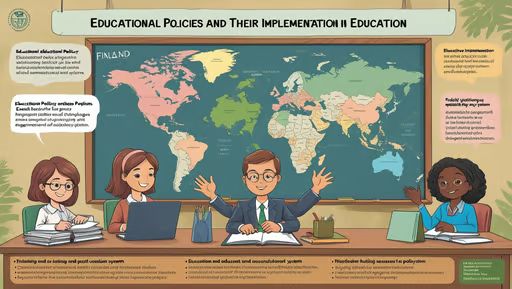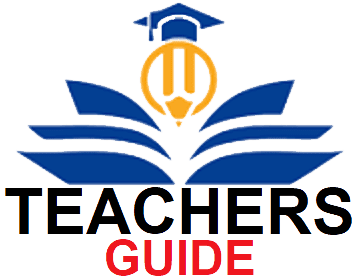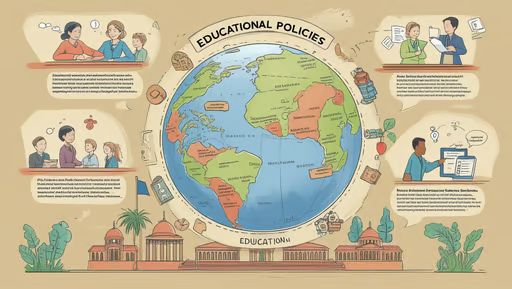Educational Policies and Their Implementation in Education, Education is the cornerstone of societal development, shaping the future of individuals and nations. Educational policies play a pivotal role in defining the direction, quality, and accessibility of education systems. These policies are designed to address challenges, promote equity, and ensure that education systems are aligned with the evolving needs of society. However, the success of educational policies depends not only on their formulation but also on their effective implementation. This article explores the importance of educational policies, the challenges in their implementation, and strategies to ensure their success.
The Importance of Educational Policies
Educational policies are frameworks or guidelines established by governments, institutions, or organizations to regulate and improve education systems. They address various aspects of education, including curriculum design, teacher training, infrastructure development, funding, and access to education. The significance of educational policies lies in their ability to:
- Promote Equity and Inclusion: Educational policies aim to ensure that all individuals, regardless of their socio-economic background, gender, or geographic location, have access to quality education. For example, policies like the Right to Education Act in India mandate free and compulsory education for children aged 6 to 14.
- Enhance Quality of Education: Policies set standards for curriculum, teaching methods, and assessment to improve the quality of education. For instance, the No Child Left Behind Act in the United States focused on improving student performance through standardized testing and accountability measures.
- Address Emerging Challenges: Educational policies are designed to tackle contemporary issues such as digital literacy, climate change, and global competitiveness. For example, many countries are now integrating technology and sustainability into their curricula.
- Foster Economic and Social Development: Education is a key driver of economic growth and social progress. Policies that prioritize skill development and vocational training can help bridge the gap between education and employment.
Challenges in Implementing Educational Policies
While educational policies are essential for progress, their implementation often faces significant challenges. These challenges can hinder the effectiveness of policies and prevent them from achieving their intended outcomes. Some of the key challenges include:
- Lack of Resources: Many educational policies require substantial financial and human resources for implementation. However, limited budgets, inadequate infrastructure, and a shortage of trained teachers can impede progress. For example, in developing countries, the lack of funding often results in overcrowded classrooms and insufficient learning materials.
- Resistance to Change: Implementing new policies often requires changes in existing practices, which can be met with resistance from stakeholders such as teachers, administrators, and parents. For instance, the introduction of competency-based curricula may face pushback from educators accustomed to traditional teaching methods.
- Ineffective Monitoring and Evaluation: Without proper monitoring and evaluation mechanisms, it is difficult to assess the impact of educational policies. In many cases, policies are not implemented as intended, or their outcomes are not measured accurately.
- Socio-Cultural Barriers: Cultural norms and societal attitudes can affect the implementation of educational policies. For example, policies aimed at promoting girls’ education may face resistance in communities where gender discrimination is prevalent.
- Political Instability: Changes in government or political priorities can disrupt the implementation of long-term educational policies. This lack of continuity often results in incomplete or inconsistent reforms.

Strategies for Effective Implementation of Educational Policies
To overcome these challenges and ensure the successful implementation of educational policies, the following strategies can be adopted:
- Adequate Funding and Resource Allocation: Governments and stakeholders must prioritize education in their budgets and allocate sufficient resources for policy implementation. This includes investing in infrastructure, teacher training, and learning materials. Public-private partnerships can also play a crucial role in mobilizing resources.
- Stakeholder Engagement: Involving all stakeholders, including teachers, parents, students, and community leaders, in the policy-making process can foster a sense of ownership and reduce resistance to change. Regular consultations and feedback mechanisms can help address concerns and improve policy design.
- Capacity Building: Training and professional development programs for teachers and administrators are essential for the successful implementation of educational policies. Educators need to be equipped with the skills and knowledge to adapt to new teaching methods and technologies.
- Robust Monitoring and Evaluation Systems: Establishing clear indicators and benchmarks for measuring the success of educational policies is crucial. Regular monitoring and evaluation can help identify gaps, make necessary adjustments, and ensure accountability.
- Addressing Socio-Cultural Barriers: Educational policies must be sensitive to the cultural and social context in which they are implemented. Awareness campaigns and community outreach programs can help change attitudes and promote acceptance of new policies.
- Ensuring Policy Continuity: To avoid disruptions caused by political changes, educational policies should be designed with long-term goals in mind. Building consensus across political parties and involving independent bodies in policy implementation can help maintain continuity.
- Leveraging Technology: Technology can play a transformative role in implementing educational policies. Digital tools and platforms can enhance access to education, improve teaching and learning experiences, and facilitate data collection for monitoring and evaluation.
Case Studies: Successful Implementation of Educational Policies
- Finland’s Education System: Finland is often cited as a global leader in education due to its innovative policies and effective implementation. The country focuses on equity, teacher autonomy, and student-centered learning. Finnish teachers are highly trained and respected, and the curriculum emphasizes critical thinking and creativity. The success of Finland’s education system is attributed to consistent policies, adequate funding, and a strong emphasis on teacher professionalism.
- Rwanda’s Education for All Policy: After the 1994 genocide, Rwanda implemented the Education for All policy to rebuild its education system and promote national unity. The government invested in infrastructure, teacher training, and curriculum reform. As a result, Rwanda has achieved significant progress in increasing enrollment rates and improving the quality of education.
- Singapore’s SkillsFuture Initiative: Singapore’s SkillsFuture initiative is a national policy aimed at promoting lifelong learning and skill development. The policy provides citizens with opportunities to upgrade their skills and stay competitive in the global economy. The success of this initiative is due to strong government support, collaboration with industry stakeholders, and a focus on practical, job-relevant skills.
Conclusion
Educational policies are essential for shaping the future of education and ensuring that it meets the needs of individuals and societies. However, their success depends on effective implementation, which requires adequate resources, stakeholder engagement, capacity building, and robust monitoring and evaluation systems. By addressing the challenges and adopting best practices, governments and institutions can create education systems that are equitable, inclusive, and responsive to the demands of the 21st century. As the world continues to evolve, educational policies must remain dynamic and adaptable, ensuring that every individual has the opportunity to reach their full potential.

